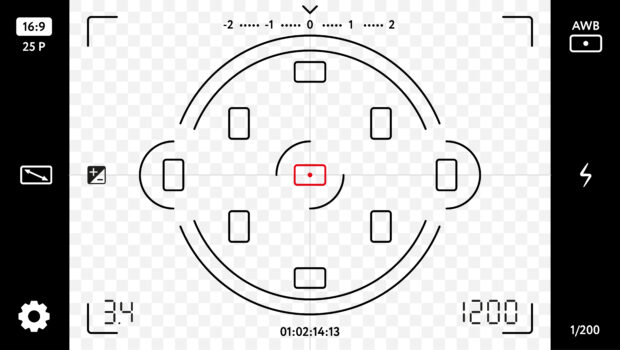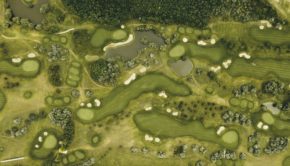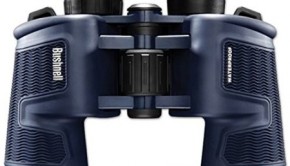How Dose a Rangefinder Reticle work
Binoculars are a simple thing but quite attractive and very functional. At first glance, it can only be used to look at distant objects, but it has another exciting and valuable thing called a rangefinder reticle! It follows from the name that it can be used to determine the distance to a particular object, but those who have seen this grid know that these are just two mutually perpendicular scales with divisions and without any numerical designations (or with tags that allow you to calculate only scale division value). We will analyze all the necessary actions essentially. To begin with, we will determine the price of the scale division. (The division price is the value equal to one cell of the scale). It is usually standardized and is similar to 5\1000 or “five thousandths.” Therefore, the distance between two large strokes on the scale is ten thousandths or 10\1000. Visually it looks more accessible than in words. This is the minimum theory that is desirable to know but not necessary.
What is Rangefinder Reticles?
The rangefinder reticle has two scales in meters. To determine the distance to the observed object with binoculars (inc. night vision binoculars) with a rangefinder grid, combine the lower line of the reference scale with the base of the image of the object, and determine the distance to the thing using the upper point of the object on the grid scale. On the left scale, determine the distance in meters to an object measuring 6m. When obtaining the space for things with a known height less (more significant) by 2 or 3 times, the numerical value of the grid, respectively, must be divided (multiplied) by 2 or 3. On the correct grid scale, determine the distance in meters to an object measuring 1.75 meters (an average growth).
How Do Range Finding and Reticles work?
The principle of operation and types of rangefinders: laser vs. ultrasonic. The focus of operation of a laser rangefinder is that the diode sends a beam, which, reflected from the surface, returns to the device and is captured by an optical lens. The principle of counting the distance traveled by the beam determines the differences between the types of rangefinders. According to this criterion, devices are pulsed – in them, the distance is considered according to the time spent by the beam; phase – the phases of the emitted and received waves are compared, such a device has greater accuracy. Far away in the linear grid of rangefinders are ultrasonic devices, in which the results are determined by the time it takes a sound wave to travel a certain distance. In addition to the ultrasonic emitter (speaker) and receiver (microphone), they are equipped with a laser pointer. Such devices work in any light but at a short distance.
The most common models with the ability to measure up to 20 m. Tips from the pros, for more accurate data, it is better to choose a laser tape measure: its measurement error is less than that of an ultrasonic one. Main features: beam, safety, and protection. When selecting a laser tape measure, primary attention is paid to the characteristics of the shaft (range, error, visibility), human safety, and protection of the instrument from dust and moisture. The measurement range depends on the laser class. The color of the beam in roulettes is red or green.
The first is budgetary due to a more economical emitter, but it isn’t easy to distinguish in sunny weather. In addition, if it gets into the eyes at close range, it can burn the cornea. The green laser is brighter and sharper due to its spectrum, which is closer to the sensitivity zone of the eye. But such devices are more expensive; they discharge the battery faster and work only at favorable temperatures.
Life hack: if you plan to work with a rangefinder outdoors in winter, take a device with silicone buttons, which, unlike rubber ones, will not harden in the cold and will not work worse when pressed. Also, rangefinders have various “chips” and configurations: Auto-off – a function that, if the device is not used for a long time, will turn it off to save battery or accumulator power. Remote control via a smartphone is practical when working in open areas and when measurements are taken over long distances (from 50 m and above). A strap is also included. With it, it is more convenient and safer to hold the device.
To choose an accurate and reliable rangefinder, you need the following:
1. Decide on the type of device. Laser or ultrasonic
The first is more expensive but shoots more accurately and further; the second work in any degree of illumination. 2. Pick up the main characteristics. First, everything related to the beam: its range, error, color, and visibility. Secondly, the class of dust and moisture protection and safety. Dust and moisture protection – reliable operation in any conditions, safety – your health. 3. Think about calculations and measurements. Conventional rangefinders measure distance. “Averages” consider the area, volume, and perimeter. The “cool” ones know the Pythagorean Theorem, calculate the minimum and maximum values, work with polygonal objects and are ready to determine the fourth side of the trapezoid from three known ones. 4. Take a closer look at other lotions and equipment. The remote control is necessary for work “in the field” in large areas. Designers will appreciate data transfer via Bluetooth or USB. The reticle, scope, and target will help to “win” the distance. Now you know everything to choose the perfect rangefinder. Enjoy the shopping!
Now let’s pay attention to the dimensional grid, and the first question is: How does it work? To obtain a sharp image of a distant object in the left eyepiece, turn the handwheel of the central focusing mechanism, and for a strong impression in the right eyepiece, turn the right eyecup. Remember, the left eyepiece is stationary. The binoculars have a rangefinder or goniometer grid. The rangefinder reticle has two scales in meters. To determine the distance to the observed object with binoculars with a rangefinder grid, combine the lower line of the reference scale with the base of the image of the object, and determine the distance to the thing using the upper point of the object on the grid scale. On the left scale, determine the distance in meters to an object measuring 6m. When obtaining the space for things with a known height less (more significant) by 2 or 3 times, the numerical value of the grid, respectively, must be divided (multiplied) by 2 or 3. On the correct grid scale, determine the distance in meters to an object measuring 1.75 meters (an average growth).
Types of Rangefinding Reticles
What does it mean? Reticles, like optical sights, are divided into tactical and hunting. The main difference between these types of nets is that tactical nets are all ballistic nets while hunting nets are “simple.» Hunting reticles are more straightforward because you shoot mostly at medium and short ranges. At long distances, shooting is possible but subject to ideal parameters (wind, pressure, humidity, the position of the weapon, and the goal). There are sights for mountain hunting, for example, where shooting can be done at a distance of a kilometer, but the right hunters in an unfamiliar area at such distances almost never shoot; they try to get closer for an accurate shot.
Ballistic (tactical) grids are designed to determine the distance to a goal and to adjust corrections at a distance and downwind quickly. Ballistic reticles are used for accurate shooting at different lengths, all sights of military snipers and high-precision athletes, with a ballistic reticle. Ballistic reticles are also used in hunting scopes but are more straightforward and versatile. In tactical areas, there are reticles directly for a certain caliber, mostly popular army calibers. These reticles work with a particular cartridge, and all divisions on the reticle are for a certain distance. Tactical nets include three main types. Mildot – Grid with a simple crosshair, on which divisions are made in the form of dots (mils), the distance between which is about 10 cm, at 100 meters. This is a classic army grid. Chorus – a grid on which divisions are applied vertically and horizontally, a grid for shooting at ultra-long distances. Favorite grid of athletes and army snipers. Ballistic Reticle based on a hunting reticle with vertical divisions but signed divisions. Each division indicates a bullet hit at a certain distance. In the instructions for this reticle, as a rule, they write calibers that are most suitable for shooting.
Conclusion
It is worth noting that there are two types of rangefinder binoculars: simple rangefinder binoculars and laser rangefinder binoculars. The second type is more modern, convenient, and accurate (the error is usually within a meter), but the price of such binoculars is much higher. Binoculars with a laser rangefinder have a self-explanatory interface, which is straightforward: focus, point the sighting circle at the target, and press the button. The device will make the necessary calculations. It is more challenging to use binoculars with a rangefinder reticle; they also have a more significant measurement error, but their main advantage is the price: such binoculars are much cheaper than binoculars with a laser rangefinder. Although we said using binoculars with a rangefinder reticle is not so easy, everything is simple here.
Cover Image by Freepik
















